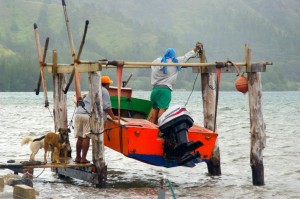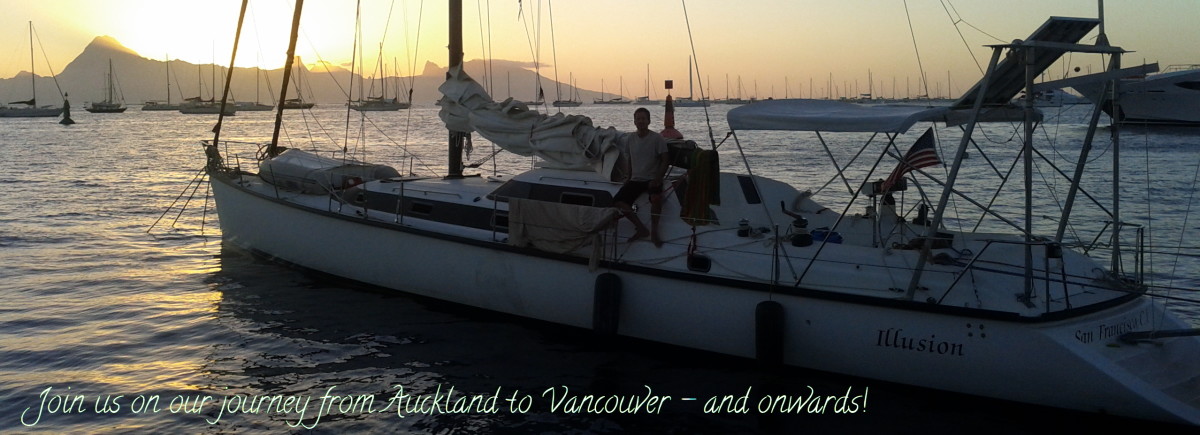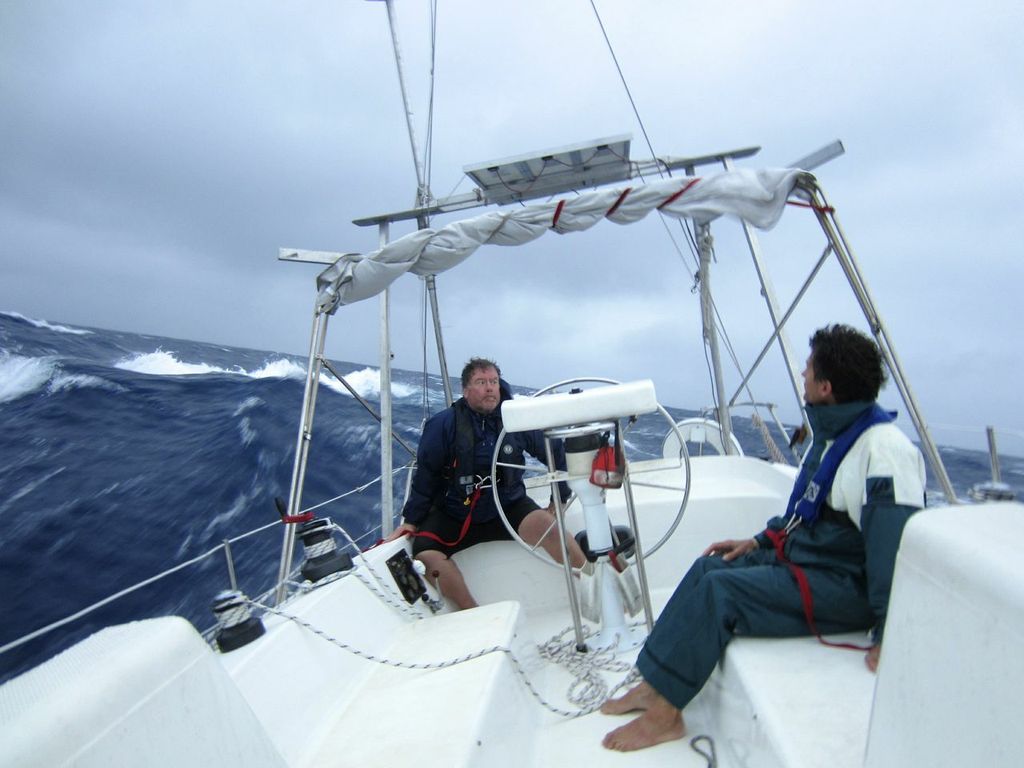They’re not often talked about, but I’m fascinated by rogue waves – waves that are much bigger than the rest of the sea around them, jumping up at you out of nowhere. Even the name suggests mischief and danger. I’ve witnessed what I’d call mini-rogues (basically waves that are noticeably larger than the average sea state) many times while out in the Pacific, usually during or near storm systems, but sometimes caused by storms hundreds or a thousand miles away. Proper “rogue waves” are less common, but more dramatic. Continue reading “Rogue Waves”
Tag: Rapa Iti
Engineless
I am still surprised by the confusion that emanates from others when I mention that we’ll be departing their island soon. Of course, they know that Illusion‘s main engine is not functional, so that helps to explain it – I tell them that we’ll sail to the next island. It is a sailboat…
Continue reading “Engineless”
Feasts and friendliness – post by Deb
 The island of Rapa is ruggedly beautiful with jagged green peaks surrounding a large bay. Atop the ridges are the remains of twelve ancient forts built by the old tribes of Rapa, who according to legend, were fierce warriors who waged constant war against one other. George Vancouver, the first European to “discover” the island in 1791 (small world), estimated that there were about 2,000 inhabitants at the time. After the missionaries arrived in the mid nineteenth century with their western diseases, the population plummeted to a few hundred. Today, there are 500 residents who pretty much live off the bounty of the land. Continue reading “Feasts and friendliness – post by Deb”
The island of Rapa is ruggedly beautiful with jagged green peaks surrounding a large bay. Atop the ridges are the remains of twelve ancient forts built by the old tribes of Rapa, who according to legend, were fierce warriors who waged constant war against one other. George Vancouver, the first European to “discover” the island in 1791 (small world), estimated that there were about 2,000 inhabitants at the time. After the missionaries arrived in the mid nineteenth century with their western diseases, the population plummeted to a few hundred. Today, there are 500 residents who pretty much live off the bounty of the land. Continue reading “Feasts and friendliness – post by Deb”
Landfall – post by John
June 22 2013 we made landfall, on the French Polynesian island called Rapa Iti. It is a very small island. Looking at a map of the polynesian islands it is west and south, on the bottom right hand corner. The next islands over are Pitcairn and Easter. In fact, the original name for Easter Island is Rapa Nui. Nui means large and Iti means small.
This island has stone structures too. It is shaped like a letter C, with a harbour on the east side. The island is volcanic of course, and the tall mountains are carved with weather erosion, creating jagged peaks, even sharper and more dramatic than on the Napali trail in Kauai or in the western fjords of the south island of New Zealand. As you enter the harbour you see on the very tips of the jagged peaks, stone forts shaped like bee hives. Pa, they are called, and they are built on a peak for self defence. There are twelve of these, and many years ago they were built and used by each of the twelve families that lived here. Warfare was evidently common, and these forts were necessary for protection. Continue reading “Landfall – post by John”
Sailing to Rapa Iti – post by Deb
We left Auckland on May 30th, sailing east towards Rapa in the Iles Australis. It was surreal to watch the city lights disappear on the horizon – hard to believe that the time had finally come to begin our journey. The weather forecast showed two low pressure systems building, so we sailed southeast to avoid them. The first few days were slow going due to light winds, but it picked up by day four, so that we were able to average about 150 nautical miles per day. We headed northeast, hoping to catch the coat tails of the storm and ride them east (low pressure systems rotate clockwise in the southern hemisphere). The winds and seas got progressively bigger and we found ourselves in the middle of a 420 mile wide gale. No skirting this one unfortunately.

